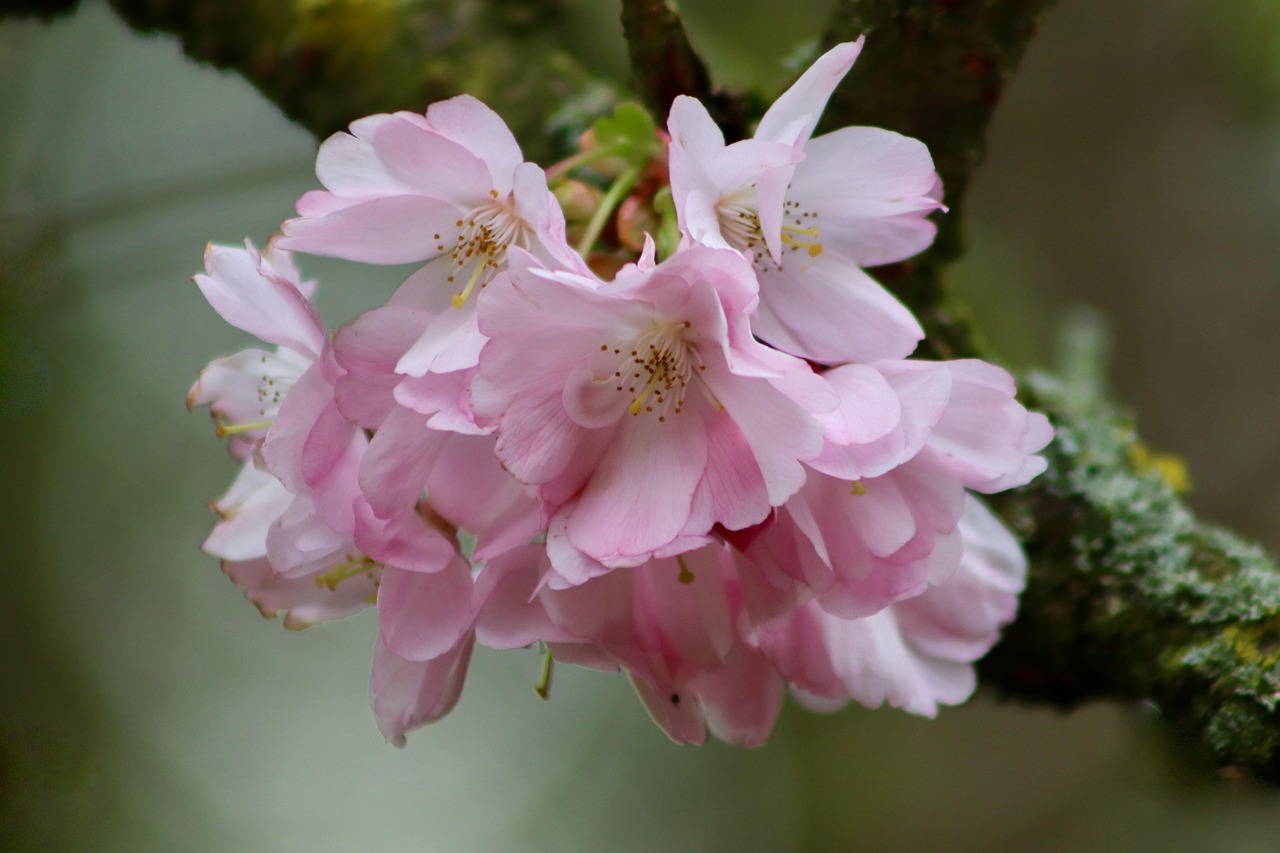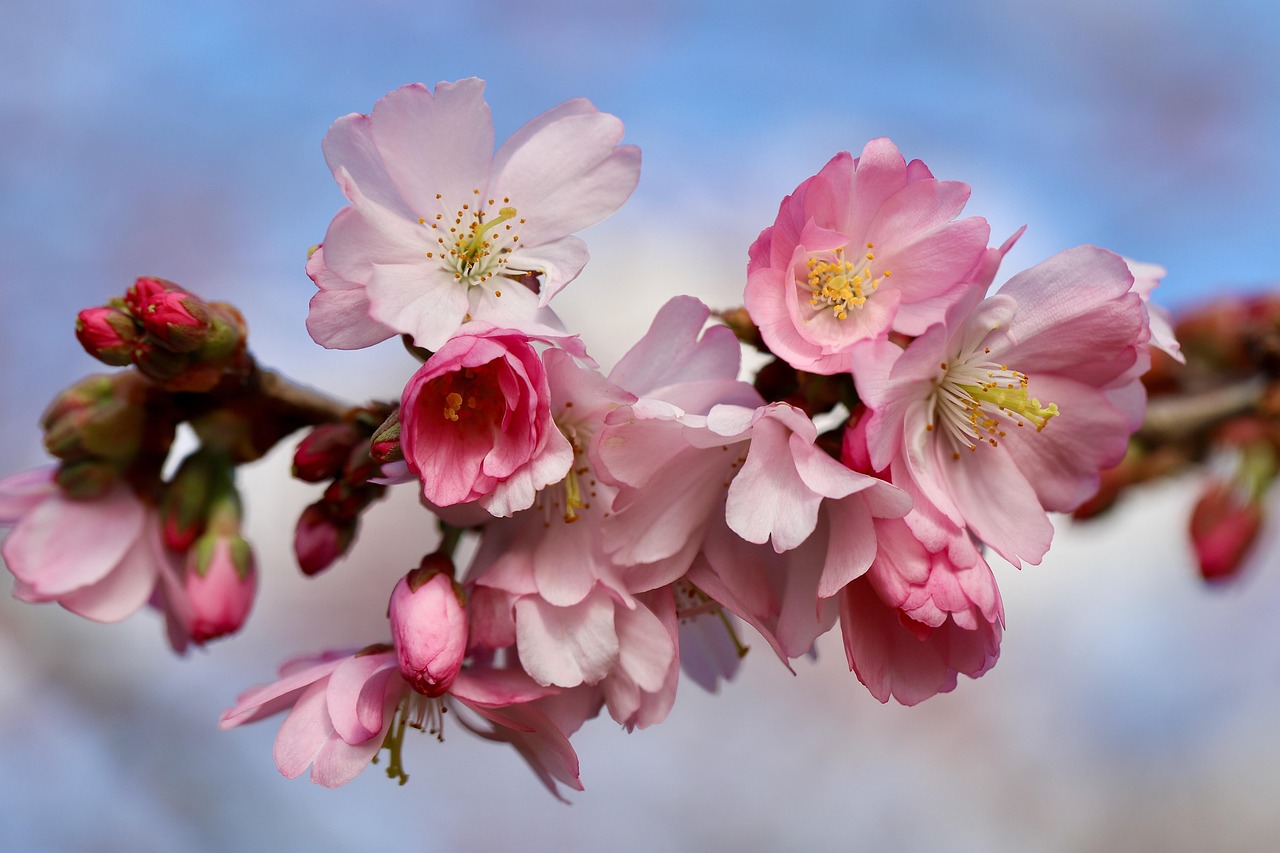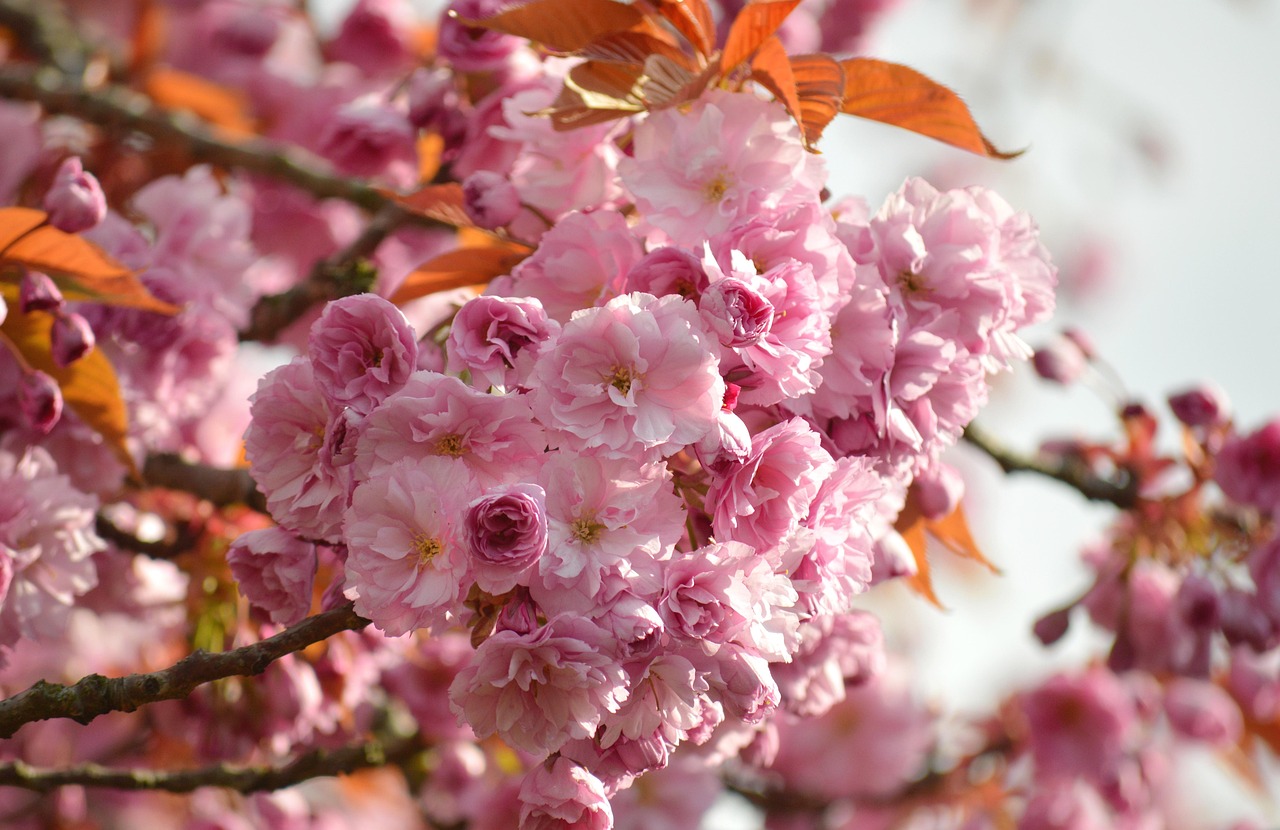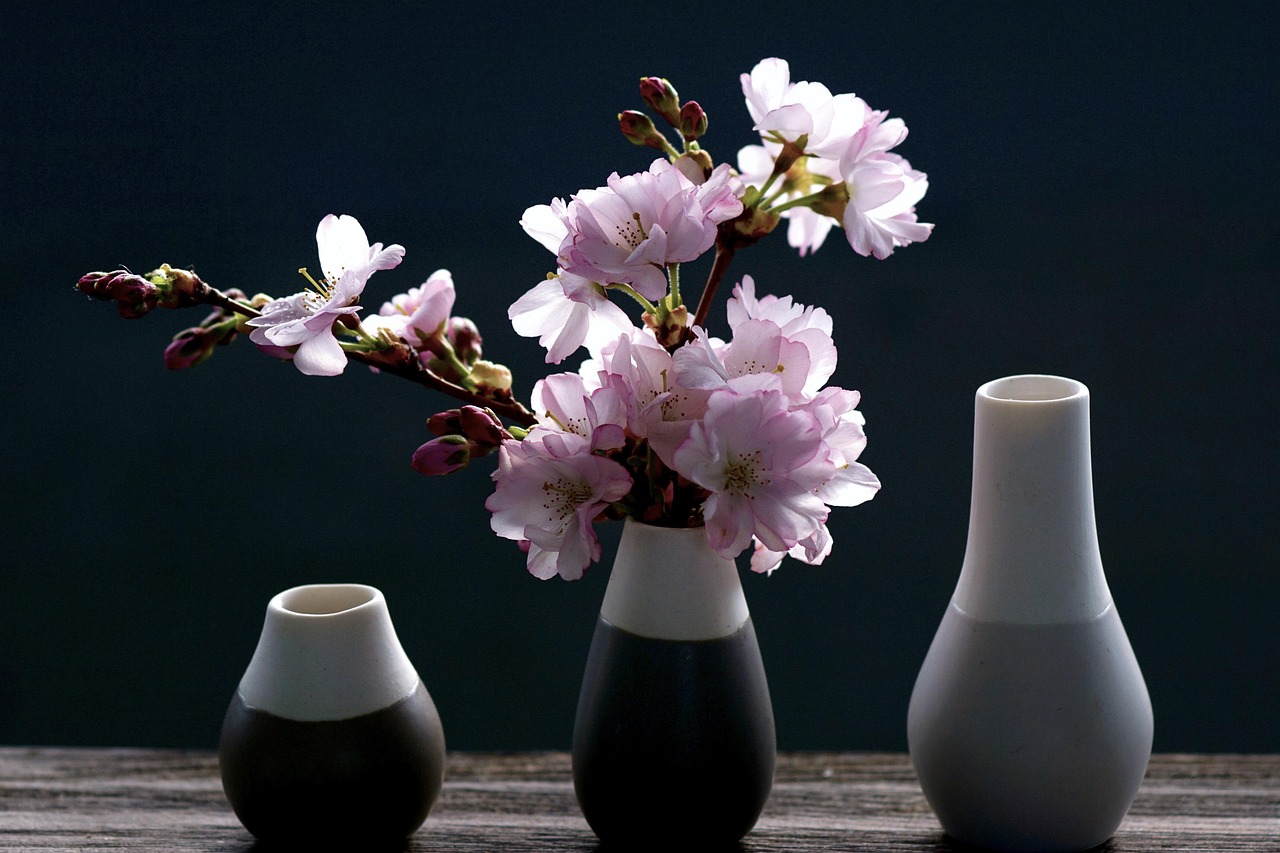Cherry blossom tree pruning enhances the tree’s beauty, promotes healthy growth, and encourages vibrant flowering. Proper techniques ensure that the branches maintain an appealing structure while allowing sunlight to reach all parts of the tree.
The cherry blossom tree, known for its stunning pink and white flowers, is a symbol of beauty and renewal. These trees are not only visually striking but also carry cultural significance in many parts of the world, particularly in Japan. To maintain their iconic beauty, proper care is essential. One of the most critical aspects of this care is pruning. Pruning helps shape the tree, promotes healthy growth, and enhances its blooming potential.

Pruning cherry blossom trees requires understanding their growth patterns and flowering habits. The best time to prune is typically in late winter or early spring before new growth begins. However, the specific timing may vary based on the local climate and the species of cherry blossom. When done correctly, pruning can lead to a more beautiful tree with a longer lifespan.
Understanding Cherry Blossom Trees
Cherry blossom trees belong to the genus Prunus, which includes several species known for their beautiful blossoms. Here are some common types:
| Species | Common Name | Bloom Color | Bloom Time |
|---|---|---|---|
| Prunus serrulata | Japanese Cherry | Pink to White | March-April |
| Prunus avium | Sweet Cherry | White | April-May |
| Prunus sargentii | Sargent Cherry | Pink | April |
| Prunus subhirtella | Higan Cherry | Pink | March-April |
Each species has unique characteristics, including bloom color and timing. Understanding these differences is essential for effective pruning practices tailored to each type. Proper pruning not only enhances aesthetics but also supports the overall health of the tree by removing dead or diseased limbs.

The Importance of Pruning
Pruning cherry blossom trees serves multiple purposes. Here are some key reasons to consider:
- Enhances Aesthetics: Regular pruning helps maintain a pleasing shape and encourages abundant flowering.
- Promotes Health: Removing dead or diseased branches prevents the spread of pests and diseases.
- Encourages Growth: Pruning stimulates new growth, leading to more vibrant blooms.
- Improves Air Circulation: Thinning out dense areas allows better airflow, reducing the risk of fungal infections.
The timing and technique of pruning are crucial. For instance, pruning immediately after flowering can remove potential buds for the following year. Therefore, understanding when to prune is as important as knowing how to prune.
When to Prune Cherry Blossom Trees
The ideal time for pruning cherry blossom trees is late winter or early spring. At this time, the tree is still dormant, which minimizes stress on the plant. Here are some tips for timing:

- Late Winter: In regions with milder winters, pruning can be done in late February to early March.
- Early Spring: In colder climates, wait until the last frost has passed, usually around March or early April.
- Avoid Late Pruning: Pruning too late can remove flower buds and reduce blooming potential.
Monitoring the weather and local conditions will help determine the best time for pruning in your area. Proper timing not only enhances the beauty of the cherry blossoms but also ensures their health and longevity.
Pruning Techniques for Cherry Blossom Trees
Effective pruning techniques involve careful planning and execution. It’s essential to use sharp, clean tools to make precise cuts. Here are some recommended techniques:
- Thinning Cuts: Remove entire branches back to their point of origin to improve air circulation.
- Heading Cuts: Shorten branches by cutting back to a bud to encourage bushier growth.
- Crown Reduction: Reduce the size of the tree’s canopy while maintaining its natural shape.
- Remove Deadwood: Cut out any dead or diseased branches to promote overall health.
Understanding these techniques will help you achieve a balanced structure in your cherry blossom trees while encouraging healthy growth and stunning blooms.

The beauty of cherry blossom trees is a sight to behold. Proper pruning practices ensure that these trees remain iconic symbols of beauty for years to come. By following best practices for timing and technique, you can create a stunning display that captivates all who see it.
Tools Needed for Pruning Cherry Blossom Trees
To effectively prune cherry blossom trees, having the right tools is essential. Using proper equipment not only makes the job easier but also ensures clean cuts, which promote quick healing. Here is a list of recommended tools:
- Hand Pruners: Ideal for small branches, these tools allow for precise cuts.
- Loppers: Useful for thicker branches, loppers provide more leverage and cutting power.
- Saws: For larger limbs, a pruning saw or a chainsaw may be necessary.
- Gloves: Protect your hands from thorns and sharp edges.
- Safety Goggles: Keep your eyes safe from flying debris when cutting.
Using high-quality tools that are well-maintained can make a significant difference in the effectiveness of your pruning efforts. Before you begin, ensure all equipment is clean and sharp to avoid damaging the tree.
Pruning Techniques in Detail
While general techniques have been mentioned, understanding each method in greater detail can enhance your pruning skills. Here are some specific pruning techniques to consider:
Thinning Cuts
This technique involves removing entire branches at their point of origin. Thinning cuts help improve air circulation and light penetration within the tree’s canopy. When using this method:
- Identify branches that cross or rub against each other.
- Choose branches that are less healthy or overcrowded.
- Make clean cuts just above a lateral branch or bud to encourage new growth.
Heading Cuts
Heading cuts are performed to shorten branches by cutting back to a bud. This encourages bushier growth and can help maintain a desired height. When applying heading cuts:
- Select branches that need to be shortened.
- Cut just above a healthy bud, ensuring the cut is at a slight angle.
- Avoid cutting too far back, as this can stress the tree.
Crown Reduction
Crown reduction is useful for managing the overall size of the tree while preserving its natural shape. This technique minimizes the height and spread of the tree’s canopy. To perform crown reduction:
- Identify the tallest branches that need shortening.
- Cut back to a lateral branch that is at least one-third the diameter of the branch you’re removing.
- Aim for a balanced appearance after making cuts.
Remove Deadwood
Deadwood removal is crucial for maintaining tree health. It prevents pest infestations and diseases from spreading. When removing deadwood:
- Look for branches that are dry, brittle, or discolored.
- Cut these branches back to healthy wood or remove them entirely.
- Check for signs of disease in surrounding branches.
Post-Pruning Care for Cherry Blossom Trees
After pruning, it is essential to care for your cherry blossom trees to ensure they recover well and continue to thrive. Here are some key steps to follow:
- Watering: Ensure the tree is properly watered after pruning, especially during dry spells. This helps reduce stress on the tree.
- Mulching: Apply a layer of organic mulch around the base of the tree. This conserves moisture and regulates soil temperature.
- Fertilizing: Consider applying a balanced fertilizer in early spring to support new growth.
- Pest Monitoring: Keep an eye out for pests or signs of disease following pruning. Early detection can prevent larger issues.
Caring for your cherry blossom trees post-pruning allows them to recover from the stress of cutting while promoting healthy new growth. Regular attention will help ensure these iconic trees remain vibrant and beautiful throughout their blooming seasons.
The Benefits of Seasonal Pruning
Pruning cherry blossom trees at the right time each season offers several benefits. Understanding these advantages can help you appreciate the importance of regular maintenance:
- Encourages Blooming: Properly timed pruning can lead to a more abundant flowering season.
- Improves Tree Structure: Seasonal pruning helps maintain a strong framework, allowing the tree to withstand harsh weather conditions.
- Enhances Health: Regular maintenance reduces the chances of disease and pest infestations, promoting longevity.
- Aesthetic Appeal: Seasonal pruning keeps the tree looking its best throughout the year, enhancing your landscape.
The combination of effective pruning techniques and post-pruning care creates an environment where cherry blossom trees can flourish. Taking these steps ensures that your trees not only survive but thrive, showcasing their stunning blossoms for all to enjoy.
Common Mistakes to Avoid When Pruning Cherry Blossom Trees
While pruning cherry blossom trees can enhance their beauty and health, several common mistakes can hinder the results. Awareness of these pitfalls can help ensure successful pruning. Here are some mistakes to avoid:
- Pruning at the Wrong Time: Cutting too late in the season can remove flower buds, leading to fewer blooms. Always prune before the growing season starts.
- Over-Pruning: Removing too many branches can stress the tree and reduce flowering. Aim for a balanced approach.
- Using Dull Tools: Dull tools can crush branches rather than make clean cuts, leading to damage and increased risk of disease.
- Poor Cuts: Making cuts at the wrong angle or leaving stubs can hinder healing. Always cut at a 45-degree angle.
- Neglecting Disease Signs: Failing to recognize and address signs of disease before pruning can lead to further issues.
By avoiding these common mistakes, you can ensure that your cherry blossom trees remain healthy and vibrant, producing beautiful blooms each season.
Signs That Your Cherry Blossom Tree Needs Pruning
Recognizing when a cherry blossom tree requires pruning is vital for maintaining its health and aesthetics. Here are some key signs to watch for:
- Overcrowding: If branches are crossing or rubbing against each other, it’s time to thin out the canopy.
- Dead or Diseased Wood: Look for branches that appear dry, brittle, or show signs of disease. These should be removed promptly.
- Excessive Growth: If the tree has grown excessively in size, it may need crown reduction to maintain a manageable shape.
- Pest Infestations: Signs of pests, such as holes in leaves or visible insects, may indicate the need for pruning to prevent further damage.
- Unbalanced Structure: If certain branches are growing disproportionately, corrective pruning is necessary to restore balance.
Regularly inspecting your cherry blossom trees for these signs can help you intervene early and maintain their iconic beauty.
The Role of Soil and Nutrition in Tree Health
The health of cherry blossom trees is closely tied to soil quality and proper nutrition. Healthy soil provides essential nutrients that support growth and flowering. Here are some considerations regarding soil and nutrition:
Soil Quality
Cherry blossom trees thrive in well-draining soil that is rich in organic matter. Poor soil conditions can lead to unhealthy trees. Here are some tips for improving soil quality:
- Test Soil pH: Cherry blossoms prefer slightly acidic to neutral soil (pH 6.0 to 7.0). Testing kits are available for accurate measurements.
- Add Organic Matter: Incorporate compost or well-rotted manure into the soil to improve its structure and nutrient content.
- Avoid Compaction: Ensure the area around the tree remains free from heavy foot traffic or vehicle use to prevent soil compaction.
Nutritional Needs
Proper nutrition plays a significant role in the overall health of cherry blossom trees. Here are some nutritional considerations:
- Fertilization: Use a balanced fertilizer in early spring to provide essential nutrients like nitrogen, phosphorus, and potassium.
- Micronutrients: Ensure the tree receives micronutrients, such as iron and magnesium, which are crucial for healthy leaf development.
- Avoid Over-Fertilization: Excessive fertilizer can harm the tree. Follow recommended application rates based on soil tests.
Maintaining good soil quality and ensuring proper nutrition will lead to healthier cherry blossom trees that produce stunning blooms each year.
The Impact of Weather on Pruning Practices
Weather conditions can significantly affect the timing and methods of pruning cherry blossom trees. Understanding how different weather patterns impact pruning is essential for optimal results.
Seasonal Considerations
The four seasons each have unique implications for pruning practices:
- Spring: This is generally the best time for pruning before new growth begins. However, be cautious of late frosts that could damage newly exposed buds.
- Summer: Light pruning during summer may be beneficial for shaping but avoid heavy pruning as it can stress the tree during its active growth phase.
- Fall: Pruning in the fall can lead to increased susceptibility to winter injury. It is better to wait until late winter or early spring.
- Winter: Dormant season pruning in late winter helps minimize stress on the tree but requires careful attention to weather conditions, as extreme cold can affect healing.
Adapting your pruning practices according to seasonal weather patterns will contribute to healthier cherry blossom trees that thrive year after year.
Caring for Young Cherry Blossom Trees
Younger cherry blossom trees require special attention as they establish their roots and develop their structure. Proper care during this stage ensures strong growth and future blooming potential. Here are some tips for caring for young trees:
- Initial Pruning: When planting young trees, prune to establish a central leader and remove any competing leaders.
- Watering Regimen: Ensure consistent moisture levels, especially during dry periods, to promote root establishment.
- Pest Management: Monitor for pests and diseases early on, as young trees may be more vulnerable.
Caring for young cherry blossom trees with attention to pruning and maintenance will set them up for a lifetime of iconic beauty.
Maintaining Cherry Blossom Trees Throughout the Seasons
Once cherry blossom trees are established, ongoing maintenance becomes essential to ensure their beauty and health year after year. Here are some strategies to maintain these trees through the changing seasons:
Spring Care
As cherry blossom trees begin to bloom in spring, it’s crucial to provide them with adequate care:
- Monitor Blooms: Keep an eye on the blooming process. If you notice fewer blooms than expected, assess whether pruning was done at the right time.
- Watering: During the blooming period, ensure the trees receive enough water, especially if rainfall is scarce.
- Pest Control: Inspect for pests such as aphids or spider mites and take action promptly to prevent infestations.
Summer Care
In summer, the focus shifts to sustaining growth and health:
- Regular Watering: Continue to water deeply and consistently during hot, dry spells.
- Mulching: Apply mulch around the base of the tree to retain moisture and suppress weeds.
- Pruning Maintenance: If necessary, conduct light summer pruning to shape the tree without stressing it.
Fall Care
As the leaves begin to change color, preparation for winter starts:
- Fertilizing: Consider applying a slow-release fertilizer in early fall to boost nutrient levels before winter dormancy.
- Leaf Cleanup: Rake up fallen leaves to prevent disease. It also helps maintain a tidy appearance in your garden.
- Inspect for Damage: Check for any signs of damage or disease that may have arisen during the growing season.
Winter Care
During winter, proper care ensures that cherry blossom trees endure the colder months:
- Protection from Snow and Ice: If heavy snow or ice is forecasted, gently brush off excess snow from branches to prevent breakage.
- Monitor for Frost Damage: Check for signs of frost damage on branches and bark. Address any issues promptly.
- Plan for Pruning: As winter progresses, prepare your tools and plan for pruning when the weather allows in late winter or early spring.
This seasonal approach to maintenance ensures that your cherry blossom trees remain healthy and vibrant through all stages of their life cycle. Regular attention will enhance their beauty and resilience against environmental factors.
The Cultural Significance of Cherry Blossom Trees
Beyond their aesthetic appeal, cherry blossom trees hold significant cultural value in various societies. In Japan, for example, cherry blossoms symbolize the transient nature of life. Hanami, the traditional practice of enjoying the fleeting beauty of cherry blossoms, draws millions of people each year to parks and gardens. This cultural celebration highlights not only the beauty of these trees but also an appreciation for nature and community.
In other parts of the world, cherry blossoms have become symbols of renewal and hope. Their seasonal blooms remind us of the cyclical nature of life and the beauty that comes with change. Understanding this cultural significance can deepen our appreciation for these iconic trees and enhance our commitment to their care.
Final Thoughts
Caring for cherry blossom trees is an art that combines knowledge, skill, and a deep appreciation for nature’s beauty. From understanding proper pruning techniques to recognizing seasonal needs, each aspect contributes to maintaining these stunning trees. Regular pruning not only enhances their aesthetic appeal but also promotes health and longevity.
The journey of nurturing cherry blossom trees is rewarding. By avoiding common pitfalls, providing adequate care throughout the seasons, and appreciating their cultural significance, you can ensure that your cherry blossoms flourish year after year. Whether you have a single tree in your garden or a grove of them in a public space, these trees will continue to captivate hearts and inspire awe with their magnificent blooms.
Through diligent care and respect for these iconic symbols of beauty, we can enjoy the splendor of cherry blossoms for generations to come. Embrace the process and revel in the joy that comes from nurturing these remarkable trees.
